15 Best Asana Alternatives in 2025 (Free & Paid Options Compared)
Explore the 15 best Asana alternatives tailored for creative agencies, featuring tools to streamline client collaboration, billing, and project workflows.

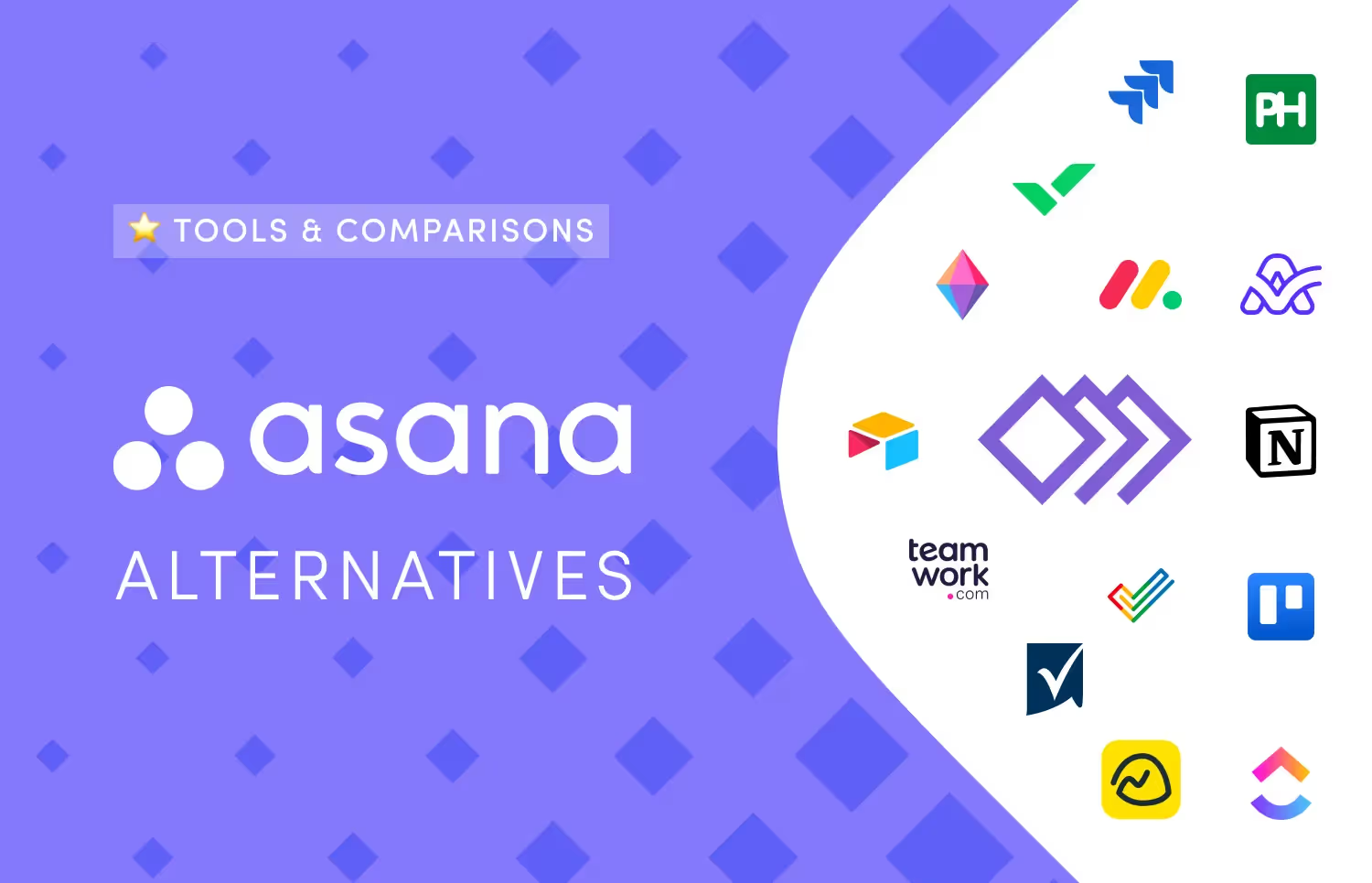


Asana is an impressive project management software, but its enterprise features aren't always the right fit for every team. You may be looking for alternatives with client portals or simpler workflows and automation.
You may even be looking for a space to communicate with your team more easily. Whatever it is, I'll review these 15 Asana alternatives through essential features that most agency owners and service businesses need:
Here's a brief overview of the reviewed tools. I'll explain more about each software after this table:
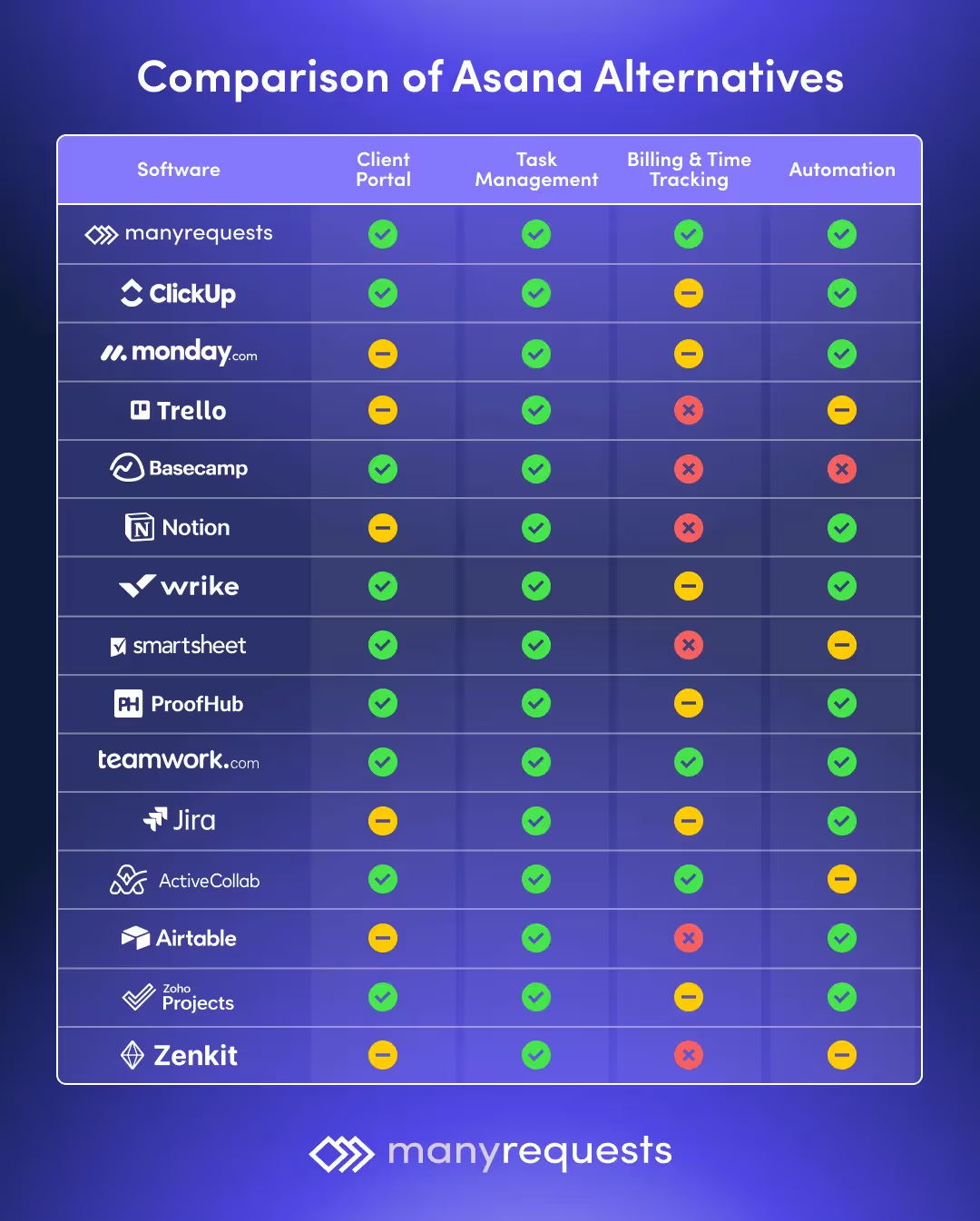
ManyRequests is an Asana Alternative for Client-First Project Management Solution
ManyRequests is a client portal that combines project management, client communication, and billing in one platform. Unlike traditional project management tools that add client features as an afterthought, it's built for agencies and service businesses with features like:
Here are some of its features:
It has a white-labeled client portal feature that allows you to use a custom domain setup to brand your agency (e.g., www.youragencyname.com). It has automated client onboarding sequences that look like the image below, and it also has a storage system to keep all files, including contracts.
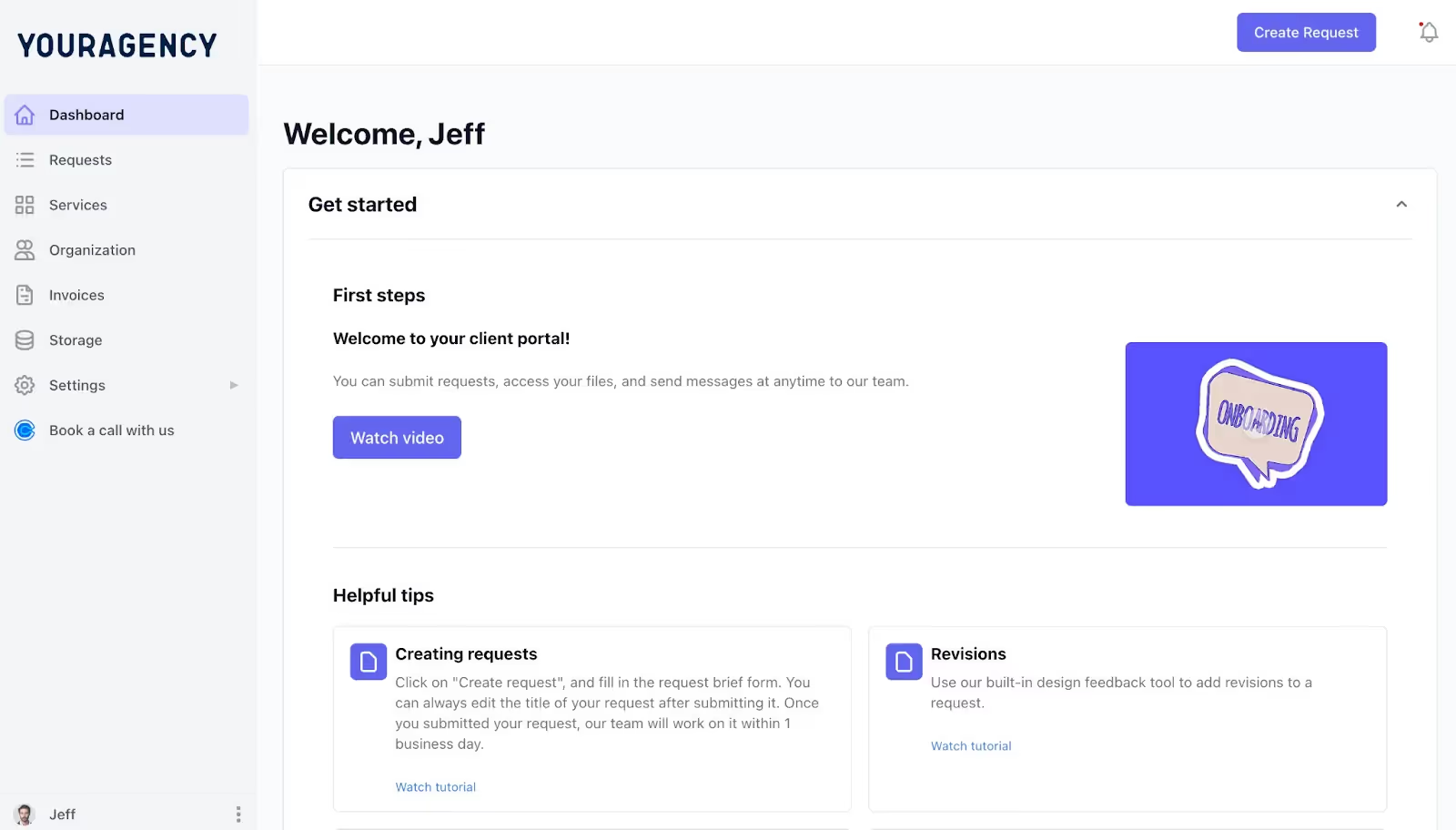
In addition, each service you offer appears in a customizable catalog. Here, you can use order forms to ask specific questions about the project and form a full brief. Here’s what a service catalog looks like:
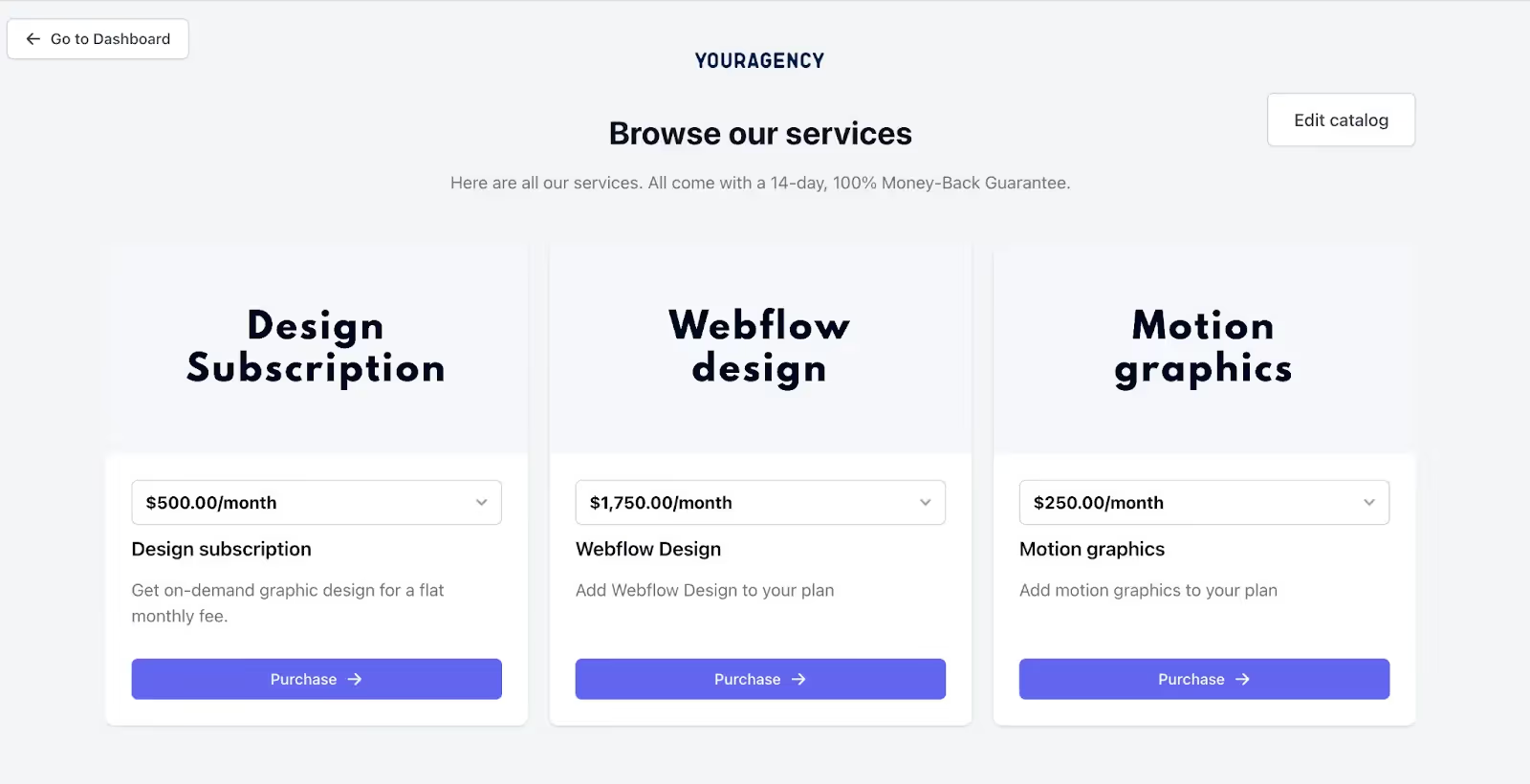
ManyRequests automatically converts client service purchases into structured tasks. When a client submits an order for a service, it triggers a task with all requirements pre-filled.
The Requests dashboard below tracks all active requests, due dates, priorities, and assignees to help you see all task details in one simple view. This way, you understand what's going on in every task without opening different workspaces.

ManyRequests automate client onboarding, task creation, and some processes in your workflow. For example, you can display your services through the service catalogs and use the order forms to collect details about the project or specific task.
This reduces manual efforts and ensures you spend less time asking clients for detailed briefs or brand materials for their projects.
ManyRequests has
ClickUp is an Asana Alternative for Customizable Project Management
ClickUp has extensive customization through its flexible workspace structure and automation features. While this requires significant setup time, it allows complex operations that power users may like. Features include:
It uses a guest system for client collaboration and allows specific view permissions without full workspace access.
Its true strength lies in task management, where users can create custom views, fields, and automated workflows to match their exact processes.
ClickUp's automation features allow teams to create sophisticated rules based on task changes, due dates, or custom conditions. However, you'll invest significant time to set up and manage these configurations.
It tracks time but requires third-party integration for your invoicing and billing needs.
📌 Tip: Read this comparison piece on ClickUp vs. Notion, where I explain their features in detail and show how ManyRequests is a better alternative for agency owners.
Monday.com is an Asana Alternative for Visual Workflow Management
Monday.com focuses on customizable boards and visual workflows to make task management and client collaboration easier. Here's how:
Monday.com uses a guest user system where clients see only shared boards. It also has a ticket feature where clients can create requests through forms shared via email. The form becomes a task.
Monday.com has multiple project views and board customization options. Each board can be tailored to specific workflow needs, with columns representing different stages or specific data points.
The visual automation builder is a standout feature of the software. You can create rules that trigger actions based on status changes, date conditions, or field updates—like automatically assigning tasks or sending client notifications when work is complete. Here’s an example:
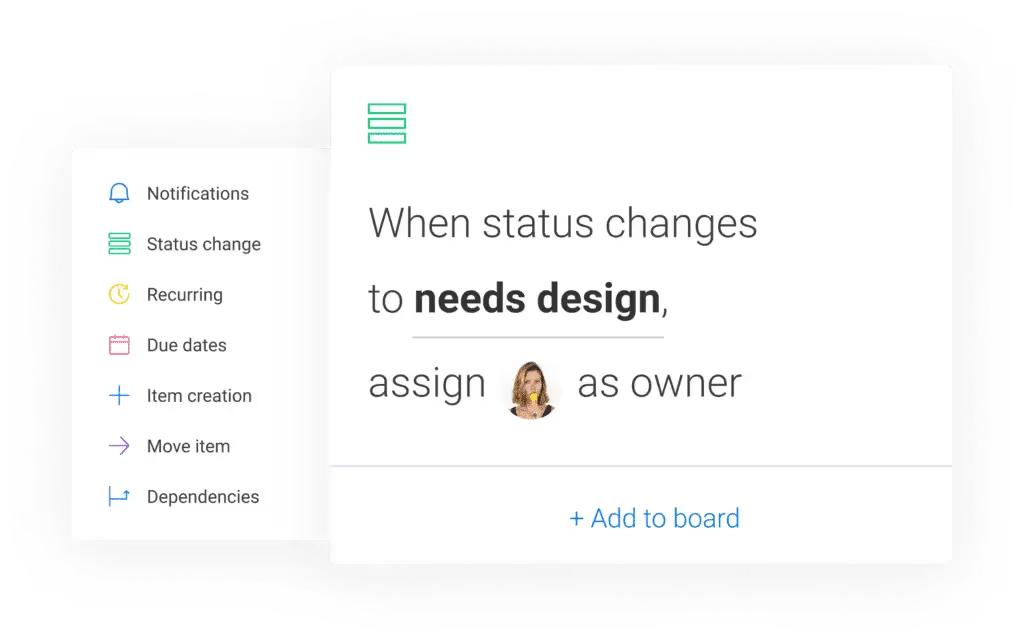
Monday.com supports basic time logging against tasks but treats it as another data point rather than a specialized feature. You also need external software for your billing and invoicing needs.
Trello is an Asana Alternative for Board-Based Project Management Tool
Trello simplifies project management through digital boards, lists, and cards—following the Kanban methodology. Some of its features include:
Collaboration happens entirely through shared boards. External users must create Trello accounts to access projects, and there is no dedicated client portal or white-labeling options.
Task management centers on moving cards between lists that represent workflow stages. Cards support checklists, due dates, and multiple assignees, which helps you track all active tasks, assignees, and statuses better.
The Butler automation feature handles repetitive tasks, including card moves, member assignments, and due date settings. However, more advanced automation requires paid plans.
There are no built-in time tracking or billing features. You'll integrate third-party apps for these functionalities.
Basecamp is an Asana Alternative for Team Communication and Project Management
Basecamp organizes work through project spaces called "HQ" and individual projects. It has exclusive features for team communication, collaboration, and brainstorming, and some of its features include:
The "Client Portal" system has restricted project space views. Clients get unique logins but can only see designated "client-visible" content, with internal team discussions and documents hidden. Also, the interface remains firmly within Basecamp's standard design with no customization options.
It provides six core tools: To-dos, Message Board, Schedule, Docs & Files, Campfire (chat), and Automatic Check-ins. Tasks work through simple lists and sublists—items are either complete or incomplete, without status changes like Kanban systems.
The Message Board is a central hub for topic-based discussions, while Campfire is for casual team chat. You can also use Automatic Check-ins to take team-wide routine updates through scheduled questions like "What are you working on this week?"
It has no built-in time tracking or billing features.
Notion is an Asana Alternative for Flexible Workspace and Project Management
Notion lets you build custom project systems using pages, databases, and blocks. This extreme flexibility comes with a tradeoff: you can create almost any system you imagine, but you'll spend significant setup time building it. Let’s explore it a little bit more:
Client collaboration works through a page-sharing system. External users access shared pages via email invite links with view, comment, or edit permissions. While you can create templated client spaces, there's no dedicated portal feature.
It uses database views as its foundation. Projects typically start with a master database viewable as Kanban boards, calendars, lists, or tables. Each entry contains customizable properties like status, assignee, and due dates.
The block-based editor allows you to combine text, tasks, embeds, and databases in any configuration. This flexibility lets teams create highly specialized workflows, though it takes time and intentional organizational efforts.
It doesn’t have built-in time tracking or billing functionality.
💡 You can learn more about how it works through this ClickUp vs Notion comparison article.
Wrike is an Asana Alternative for Enterprise-Grade Project Management
Wrike organizes work using a folder-based hierarchy; projects contain tasks and subtasks. Its comprehensive feature set makes it a top choice for organizations that need complex project tracking and resource management features in a tool. Here’s what I found:
Wrike uses a "guest license" system with role-based permissions that control client visibility. It has a document review feature where clients can directly comment on files, images, and videos to streamline feedback and approval processes.
Wrike has a distinctive three-pane view: folder structure (left), task lists (middle), and task details (right). It also supports multiple views, including a list view for detailed management, a table view for data analysis, a timeline view for scheduling, and a workload view for resource management.
The Gantt chart functionality enables dependency setting, milestone creation, and timeline adjustments through drag-and-drop features. You can use custom request forms to help streamline task creation by automatically assigning and categorizing new work based on responses.
Wrike has a time-logging feature through timers and manual entries. However, it doesn’t have an invoicing and billing feature.
Smartsheet is an Asana Alternative for Spreadsheet-Based Project Management
Smartsheet uses Excel-like interfaces to help users manage projects and organize their tasks any way they like. Its features include:
Smartsheet offers clients direct sheet sharing and portal options. Portals show multiple sheets and dashboards in one view but maintain Smartsheet's grid-based appearance with minimal branding options.
Smartsheet uses a grid interface, where rows represent tasks and columns represent task attributes. Row hierarchies support parent-child task relationships and complex work breakdown structures. It looks like this:
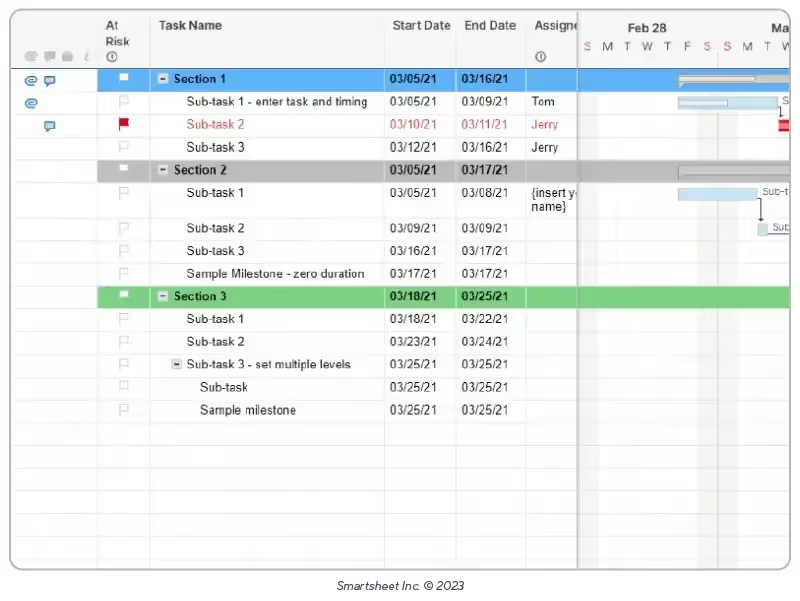
It switches between timeline, grid, Gantt, board, and calendar views of the same data. It also includes cross-sheet analytics for real-time dashboards and can help with resource management through paid add-ons.
It has no in-built time tracking or billing feature.
ProofHub is an Asana Alternative for Project Management and Client Collaboration
ProofHub combines collaboration, task management, and file review in one system. It aims to reduce the need for multiple tools through these features:
It provides clients with a dedicated space to review, comment on, and approve files without seeing internal details. It provides markup tools for precise design feedback but offers limited branding options—only logo and color changes are allowed.
ProofHub uses list or board views for task creation and assignment. Tasks support subtasks for complex projects. Progress is tracked through status updates and completion percentages, like in the image below. It offers table, board, Gantt, and calendar views.

It organizes client communication through discussion threads and announcements. Each project can have multiple discussion topics to keep feedback organized.
ProofHub has a basic time tracking feature through task timers or manual entries but lacks built-in invoicing or billing capabilities.
Teamwork is an Asana Alternative for Agency-Focused Project Management
Teamwork claims to offer project features that balance functionality with ease of use. Some of these features include:
Each client gets their own portal space to create tasks, upload files, or view progress based on permission levels. While Teamwork supports basic branding with logo and color changes, its branding remains in certain areas, like email notifications.
Teamwork organizes work through projects, task lists, and tasks with list, board, and Gantt views. It also has a Workload Planner to manage team capacity and identify overbooked members, as seen below:
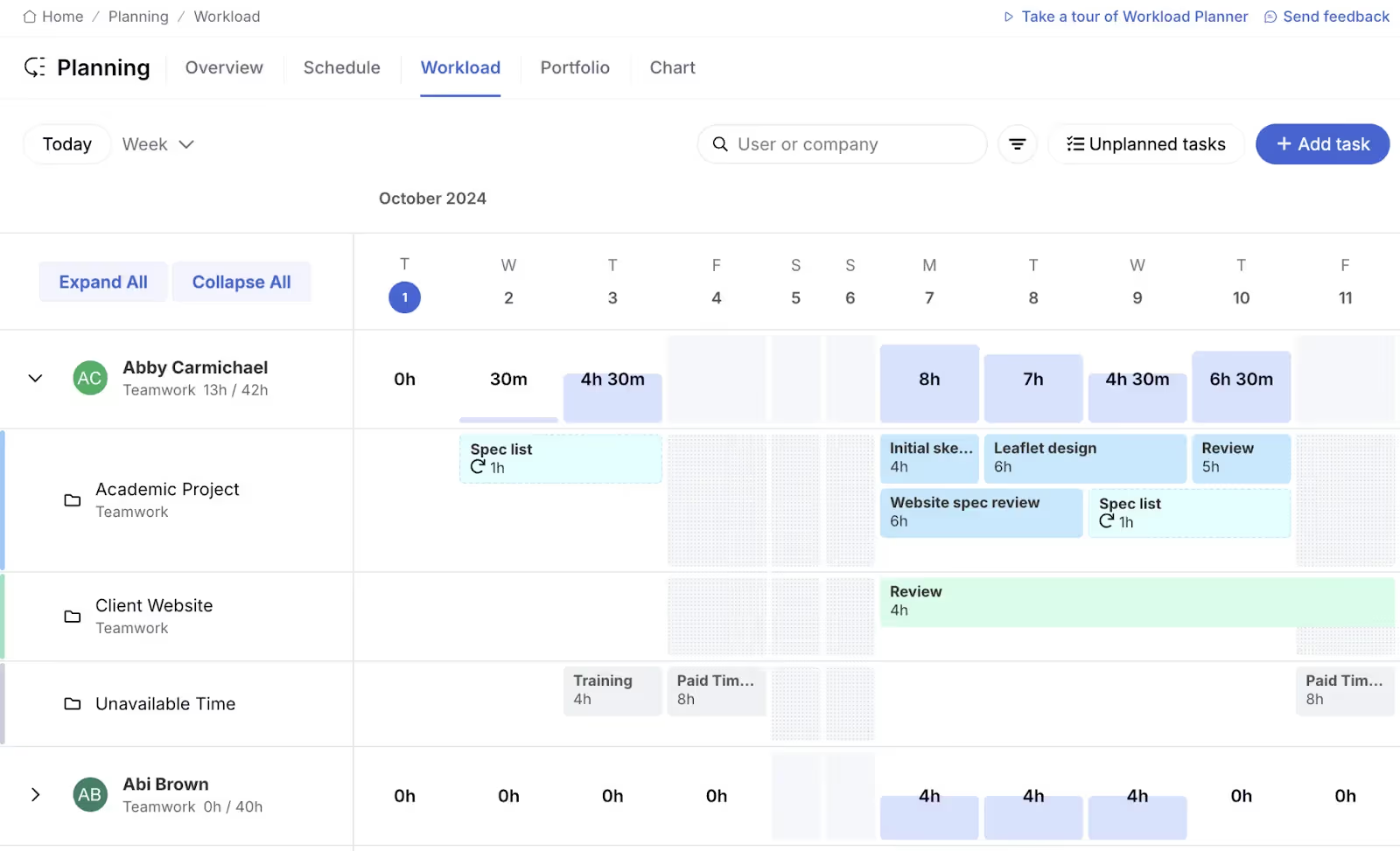
📌 Tip: Read this article on workload management to learn how to help your team avoid burnout better.
Teamwork.com saves project templates for repeatable work, preserving task structures and time estimates. It also helps standardize common project types and speeds up project creation.
Teamwork tracks time via task timers or manual entries and has basic invoicing for timesheets and expenses.
Jira is an Asana Alternative for Software Development Project Management
Jira evolved from a bug-tracking system into a comprehensive project tool. While powerful for development teams, its specialized nature makes it less suitable for general project management. Here are some of its features:
No dedicated client portal—clients must access Jira as limited-permission users. You need a Confluence subscription (Jira's documentation platform) to share files. Also, client feedback is limited to basic comments unless you add third-party apps.
Jira organizes work through issues in projects and boards. It offers three main views: Scrum boards (agile teams), Kanban boards (continuous flow), and Next-Gen boards (combined approach).
You can create rules that trigger actions based on issue changes. Also, while you can use the built-in roadmap for timeline planning, you need integration with third-party apps for complex needs.
It has a basic time-tracking feature, but it doesn’t have an invoicing feature—it requires external integration.
ActiveCollab is an Asana Alternative for a Project Management Tool for Professional Service Teams
ActiveCollab focuses on streamlining your projects by prioritizing simplicity and allowing essential features for client work. Here’s how it works:
ActiveCollab provides clients with a simplified interface that only shows their relevant projects and tasks. You control permissions for viewing, commenting, or creating tasks, but the interface remains distinctly ActiveCollab-branded. No white-label feature.
ActiveCollab works through task lists with three main views: list for details, Kanban for workflows, and calendar for deadlines. It also handles task dependencies by automatically adjusting schedules when linked tasks change.
ActiveCollab has basic templates for common task structures, though template options are limited compared to Asana alternatives like Teamwork or ManyRequests.
It tracks time through task timers or manual entries. It’s also useful for invoicing and billing solutions.
Airtable is an Asana Alternative for Database-Driven Project Management
Airtable combines the simplicity of spreadsheets with the power of databases. While it's highly flexible, you need significant time and technical knowledge to tweak the software for your project management needs. Some of its features are:
No traditional client portal—instead, it uses custom database views shared via password protection or links. You can build client dashboards using Interface Designer, but it requires technical expertise.
Everything works through linked database tables on Airtable. Views include grid (spreadsheet-style), kanban (workflows), calendar (timelines), and Gantt (schedules).
It uses formula fields for automated calculations and status updates. It also supports automation triggers, but the database approach needs careful setup and maintenance.
It does not have built-in features for time tracking. You can use the custom tables to log time and calculate costs, but you need some database technical expertise.
Zoho Projects is an Asana Alternative for Integrated Project Management
Zoho Projects is part of Zoho's business suite. Its strength lies in connecting with other Zoho apps, though it also works independently. Some of its features include:
External users get a simplified portal showing assigned projects and tasks. It has role-based permissions control, but portal customization beyond basic logo changes requires setup by a developer.
Zoho uses a hierarchy of task lists, tasks, and subtasks with list, kanban, and Gantt views. It connects directly with Zoho CRM deals and Zoho Books invoices for integrated workflow.
The main benefit comes from connecting to the Zoho ecosystem. You can link tasks to CRM deals and invoices to create an easy workflow between different teams whenever necessary. See the example below—that's the CRM team using Zoho as a task specifically to follow up on a lead:
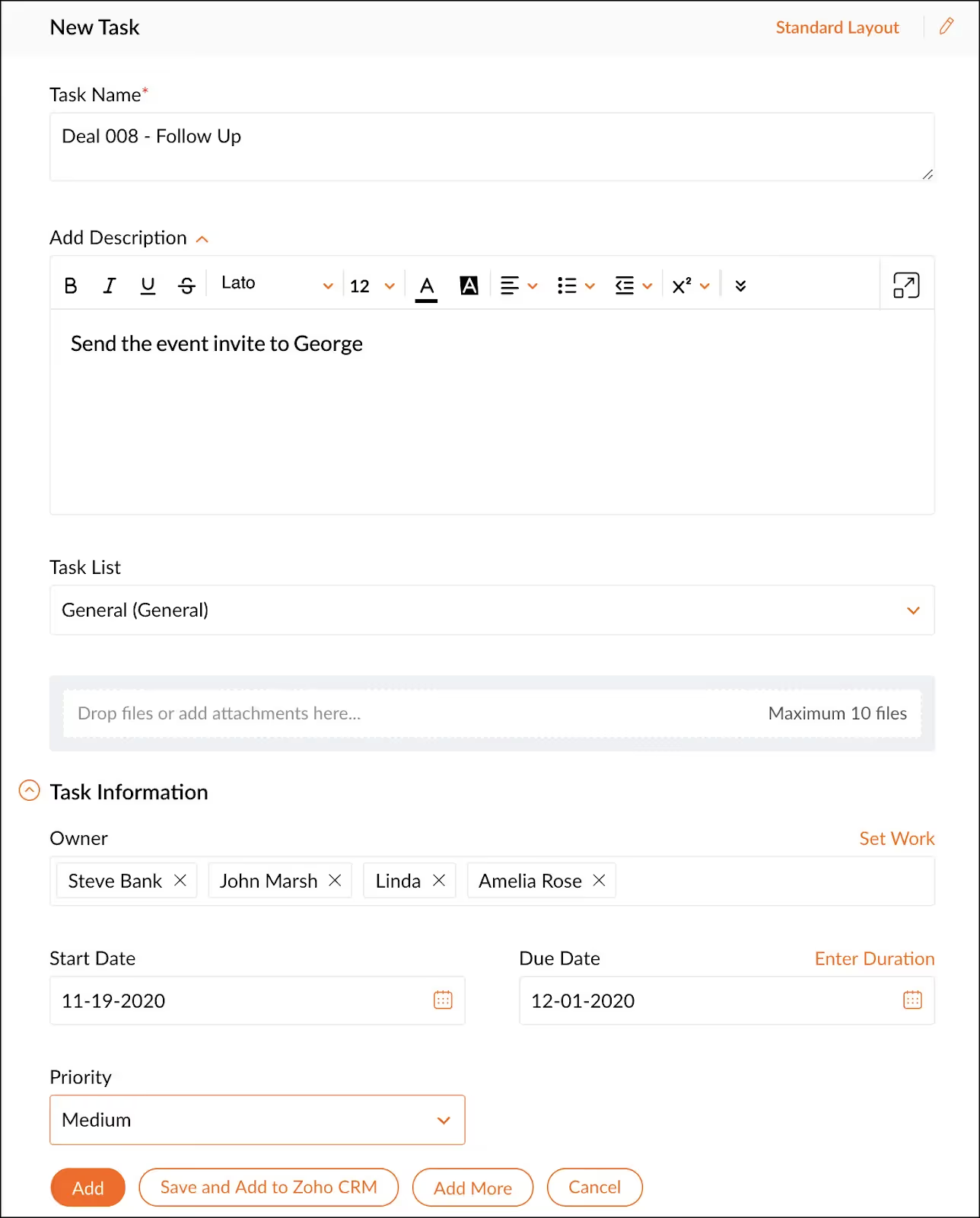
Zoho Projects has task timers and manual time entries, but Zoho Books integration is needed for complete billing features.
Zenkit is an Asana Alternative for Modular Project Management
Zenkit offers adaptable collections and views for project management. It is flexible but can take time to set up. Here are some of its features:
Zenkit doesn’t have a client portal like ManyRequests. Instead, clients get limited access to specific project collections. Also, you need to set visibility permissions for each project separately, and clients can only view files and leave comments.
Zenkit uses collections (flexible containers) with multiple views: Kanban, lists, mind maps, and calendars. You can also use custom views to filter tasks by any criteria. Lastly, Zenkit allows you to create task dependencies based on your use case, as shown below:
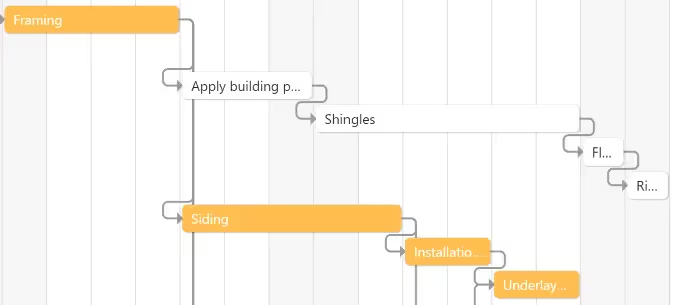
Zenkit has basic "when-then" automation, like assigning a task to team members when task status changes. Complex automation requires Zapier integration.
Zenkit offers basic time-tracking fields for items, but they're simple data fields rather than specialized features. It has no built-in billing or invoicing.
So, to recap:
Each Asana alternative has different advantages based on your use cases. ManyRequests is best for project and client management with integrated billing features; ClickUp has extensive customization to automate many aspects of your work; and Monday.com has a strong visual workflow management setup.
Choose based on these factors:
With that said, ManyRequests provides the most complete solution with:
ManyRequests also provides free migration service upon request.
Want to check? Onboard your clients and work with your teams for 14 days on ManyRequests to see whether it's exactly what you need. Try it now.